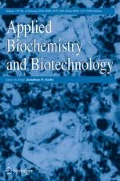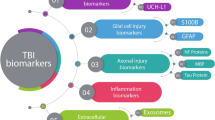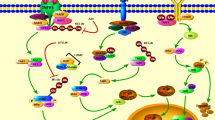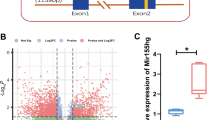Abstract
Spinal cord injury (SCI) is a neurological disease having devastating effect and results in the development of systemic inflammation. However, the molecular mechanisms of SCI remain not entirely elucidated. This study was directed toward exploring the circ Hecw1 involved in the mechanism of lipopolysaccharide (LPS)-triggered inflammation damage in neuronal cells. The in vitro model of SCI based on PC12 cells were established with lipopolysaccharide. The cell proliferation was determined by the use of cell counting kit-8 (CCK8). The expressions of circHecw1, miR-3551-3p, and inflammatory factors were measured by quantitative real-time PCR and ELISA assay. Flow cytometry was used to assess apoptosis. Western blot analysis was performed for the purpose of determining LRRTM1 and NF-kB signaling. The expression of circ Hecw1, TNF-α, IL-6, and IL-1β in LPS-triggered PC12 cells and the expression of miR-3551-3p and IL-10 were significantly decreased. Knockdown of circHecw1 promoted proliferation and inhibited apoptosis and reduction in the inflammatory cytokine expression. Our study revealed that circHecw1 regulates SCI neuronal cell inflammation imbalance by regulating the miR-3551-3p/LRRTM1 signaling.







Similar content being viewed by others
Data Availability
Not applicable.
References
Kobayakawa, K., Ohkawa, Y., Yoshizaki, S., et al. (2019). Macrophage centripetal migration drives spontaneous healing process after spinal cord injury. Sci Adv., 5(5), eaav5086.
Koda, M., Hanaoka, H., Fujii, Y., et al. (2021). Randomized trial of granulocyte colony-stimulating factor for spinal cord injury. Brain, 144(3), 789–799.
Gao, C., Yin, F., Li, R., et al. (2021). MicroRNA-145-mediated KDM6A downregulation enhances neural repair after spinal cord injury via the NOTCH2/Abcb1a axis. Oxidative Medicine and Cellular Longevity, 2021, 2580619.
Ruzicka, J., Romanyuk, N., Jirakova, K., et al. (2019). The effect of iPS-derived neural progenitors seeded on laminin-coated pHEMA-MOETACl hydrogel with dual porosity in a rat model of chronic spinal cord injury. Cell Transplantation, 28(4), 400–412.
Cheng Z, Zhu W, Cao K, et al. (2016). Anti-inflammatory mechanism of neural stem cell transplantation in spinal cord injury. Int J Mol Sci. 17(9).
Anjum A, Yazid MD, Fauzi Daud M, et al. (2020). Spinal cord injury: Pathophysiology, multimolecular interactions, and underlying recovery mechanisms. Int J Mol Sci. 21(20).
Lin, Z. H., Wang, S. Y., Chen, L. L., et al. (2017). Methylene blue mitigates acute neuroinflammation after spinal cord injury through inhibiting NLRP3 inflammasome activation in microglia. Frontiers in Cellular Neuroscience, 11, 391.
Zhang, Y., Zhou, Y., Chen, S., et al. (2019). Macrophage migration inhibitory factor facilitates prostaglandin E(2) production of astrocytes to tune inflammatory milieu following spinal cord injury. Journal of Neuroinflammation, 16(1), 85.
Chen, W. K., Feng, L. J., Liu, Q. D., et al. (2020). Inhibition of leucine-rich repeats and calponin homology domain containing 1 accelerates microglia-mediated neuroinflammation in a rat traumatic spinal cord injury model. Journal of Neuroinflammation, 17(1), 202.
Lee, J. S., Hsu, Y. H., Chiu, Y. S., Jou, I. M., & Chang, M. S. (2020). Anti-IL-20 antibody improved motor function and reduced glial scar formation after traumatic spinal cord injury in rats. Journal of Neuroinflammation, 17(1), 156.
Li, Q., Li, B., Tao, B., et al. (2021). Identification of four genes and biological characteristics associated with acute spinal cord injury in rats integrated bioinformatics analysis. Ann Transl Med., 9(7), 570.
Li, X., Kang, J., Lv, H., et al. (2021). CircPrkcsh, a circular RNA, contributes to the polarization of microglia towards the M1 phenotype induced by spinal cord injury and acts via the JNK/p38 MAPK pathway. The FASEB Journal, 35(12), e22014.
Fu, X., Zeng, H., Zhao, J., et al. (2021). Inhibition of Dectin-1 ameliorates neuroinflammation by regulating microglia/macrophage phenotype after intracerebral hemorrhage in mice. Translational Stroke Research, 12(6), 1018–1034.
Fei, M., Li, Z., Cao, Y., Jiang, C., Lin, H., & Chen, Z. (2021). MicroRNA-182 improves spinal cord injury in mice by modulating apoptosis and the inflammatory response via IKKβ/NF-κB. Laboratory Investigation, 101(9), 1238–1253.
Liu, H., Zhang, J., Xu, X., et al. (2021). SARM1 promotes neuroinflammation and inhibits neural regeneration after spinal cord injury through NF-κB signaling. Theranostics., 11(9), 4187–4206.
Feng, D., Yu, J., Bao, L., Fan, D., & Zhang, B. (2021). Inhibiting RGS1 attenuates secondary inflammation response and tissue degradation via the TLR/TRIF/NF-κB pathway in macrophage post spinal cord injury. Neuroscience Letters, 768, 136374.
Slack, F. J., & Chinnaiyan, A. M. (2019). The role of non-coding RNAs in oncology. Cell, 179(5), 1033–1055.
Hombach, S., & Kretz, M. (2016). Non-coding RNAs: Classification, biology and functioning. Advances in Experimental Medicine and Biology, 937, 3–17.
Zhang, S. B., Lin, S. Y., Liu, M., et al. (2019). CircAnks1a in the spinal cord regulates hypersensitivity in a rodent model of neuropathic pain. Nature Communications, 10(1), 4119.
Zhou, J., Xiong, Q., Chen, H., Yang, C., & Fan, Y. (2017). Identification of the spinal expression profile of non-coding RNAs involved in neuropathic pain following spared nerve injury by sequence analysis. Frontiers in Molecular Neuroscience, 10, 91.
Zhao, R. T., Zhou, J., Dong, X. L., et al. (2018). Circular ribonucleic acid expression alteration in exosomes from the brain extracellular space after traumatic brain injury in mice. Journal of Neurotrauma, 35(17), 2056–2066.
Zhou, Z. B., Du, D., Chen, K. Z., Deng, L. F., Niu, Y. L., & Zhu, L. (2019). Differential expression profiles and functional predication of circular ribonucleic acid in traumatic spinal cord injury of rats. Journal of Neurotrauma, 36(15), 2287–2297.
Pei, J. P., Fan, L. H., Nan, K., Li, J., Dang, X. Q., & Wang, K. Z. (2017). HSYA alleviates secondary neuronal death through attenuating oxidative stress, inflammatory response, and neural apoptosis in SD rat spinal cord compression injury. Journal of Neuroinflammation, 14(1), 97.
Wu, W., Li, X., Yang, Z., et al. (2021). Specific microstructural changes of the cervical spinal cord in syringomyelia estimated by diffusion tensor imaging. Science and Reports, 11(1), 5111.
Zhu, S., Chen, M., Chen, M., et al. (2020). Fibroblast growth factor 22 inhibits ER stress-induced apoptosis and improves recovery of spinal cord injury. Frontiers in Pharmacology, 11, 18.
Zhu, S., Chen, M., Deng, L., et al. (2020). The repair and autophagy mechanisms of hypoxia-regulated bFGF-modified primary embryonic neural stem cells in spinal cord injury. Stem Cells Translational Medicine, 9(5), 603–619.
Adhikary, S., Li, H., Heller, J., et al. (2011). Modulation of inflammatory responses by a cannabinoid-2-selective agonist after spinal cord injury. Journal of Neurotrauma, 28(12), 2417–2427.
Orr, M. B., & Gensel, J. C. (2018). Spinal cord injury scarring and inflammation: Therapies targeting glial and inflammatory responses. Neurotherapeutics, 15(3), 541–553.
Anwar, M. A., Al Shehabi, T. S., & Eid, A. H. (2016). Inflammogenesis of secondary spinal cord injury. Frontiers in Cellular Neuroscience, 10, 98.
Pan, Z., Li, G. F., Sun, M. L., et al. (2019). MicroRNA-1224 splicing CircularRNA-Filip1l in an Ago2-dependent manner regulates chronic inflammatory pain via targeting Ubr5. Journal of Neuroscience, 39(11), 2125–2143.
Peng, P., Zhang, B., Huang, J., et al. (2020). Identification of a circRNA-miRNA-mRNA network to explore the effects of circRNAs on pathogenesis and treatment of spinal cord injury. Life Sciences, 257, 118039.
Wang, W., Su, Y., Tang, S., et al. (2019). Identification of noncoding RNA expression profiles and regulatory interaction networks following traumatic spinal cord injury by sequence analysis. Aging (Albany NY), 11(8), 2352–2368.
Wu, R., Mao, S., Wang, Y., et al. (2019). Differential circular RNA expression profiles following spinal cord injury in rats: A temporal and experimental analysis. Frontiers in Neuroscience, 13, 1303.
Liu, Y., Liu, J., & Liu, B. (2020). Identification of circular RNA expression profiles and their implication in spinal cord injury rats at the immediate phase. Journal of Molecular Neuroscience, 70(11), 1894–1905.
Chen, J., Fu, B., Bao, J., Su, R., Zhao, H., & Liu, Z. (2021). Novel circular RNA 2960 contributes to secondary damage of spinal cord injury by sponging miRNA-124. The Journal of Comparative Neurology, 529(7), 1456–1464.
Zhao, J., Qi, X., Bai, J., Gao, X., & Cheng, L. (2020). A circRNA derived from linear HIPK3 relieves the neuronal cell apoptosis in spinal cord injury via ceRNA pattern. Biochemical and Biophysical Research Communications, 528(2), 359–367.
Funding
This work was sponsored by National Natural Science Foundation of China (81972061), National Natural Science Foundation of China (81871766), National Natural Science Foundation of China (81871776), and National Key Research and Development Project of Stem Cell and Transformation Research (2019YFA0112100).
Author information
Authors and Affiliations
Contributions
All authors contributed equally.
Corresponding author
Ethics declarations
Ethical Approval
Not applicable.
Consent to Participate
All authors have their consent to participate.
Consent to Publish
All authors have their consent to publish their work.
Competing Interests
The authors declare no competing interests.
Additional information
Publisher's Note
Springer Nature remains neutral with regard to jurisdictional claims in published maps and institutional affiliations.
Rights and permissions
About this article
Cite this article
Ban, D., Xiang, Z., Yu, P. et al. Circular RNA Hecw1 Regulates the Inflammatory Imbalance in Spinal Cord Injury via miR-3551-3p/LRRTM1 Axis. Appl Biochem Biotechnol 194, 5151–5166 (2022). https://doi.org/10.1007/s12010-022-03999-1
Accepted:
Published:
Issue Date:
DOI: https://doi.org/10.1007/s12010-022-03999-1




